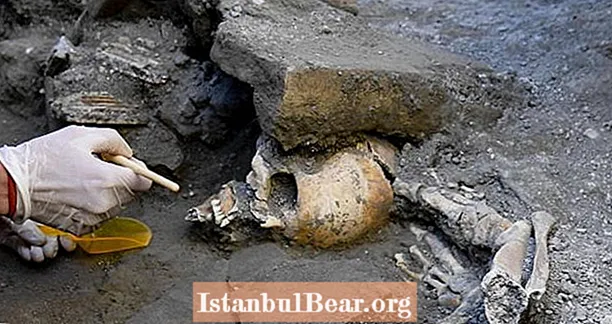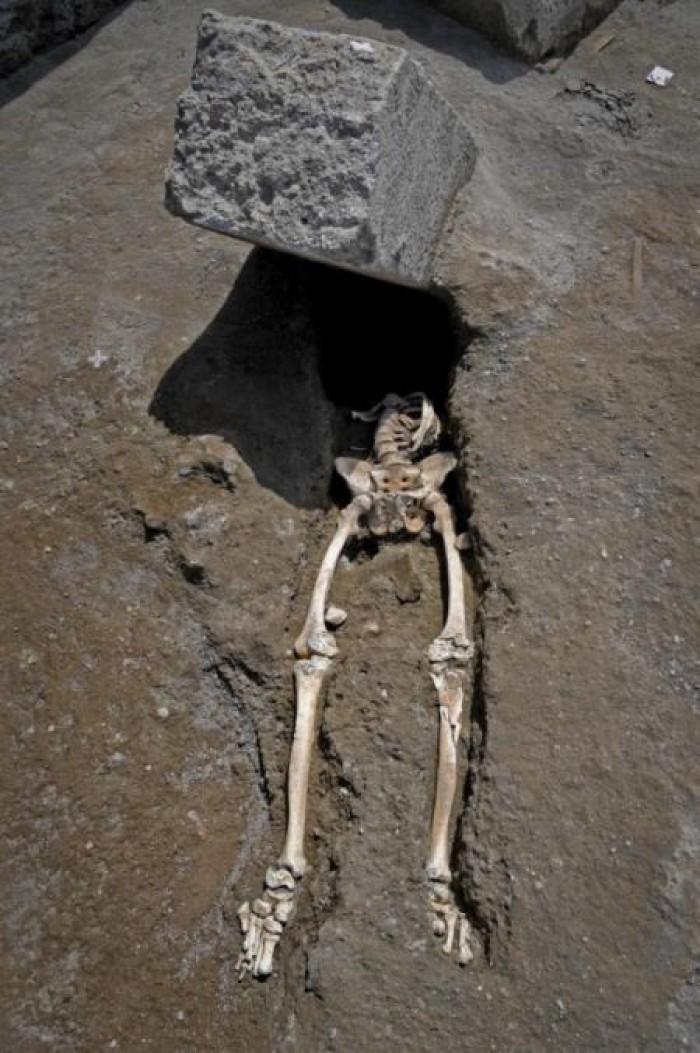In May, archaeologists excavating in Pompeii, Italy, uncovered a fascinating find: the remains of a man believed to have survived the catastrophic eruption of Mount Vesuvius around 79 A.D. Initially, the prevailing belief was that the man succumbed to death after being struck by a flying block of rock while attempting to flee. However, in the months following the discovery, fresh insights have surfaced, indicating an entirely different cause of death.

The initial conclusions drawn by archaeologists were founded on the discovery of a stone block positioned directly adjacent to the lower portion of the victim’s skeleton. In photographs of the excavation site, the body seemed to be trapped beneath a massive rock, leading the team to infer that the block caused the man’s demise, fracturing the upper part of his body in the process.
Upon further scrutiny of the site, researchers uncovered missing segments of his upper body, including the upper limbs, chest, and skull. Based on these new findings, they announced earlier this week that the man’s death was not a result of the block but rather due to suffocation. Essentially, ancient humans were killed by pyroclastic flows—swift-moving streams of hot gas and lava expelled by volcanoes.

According to researchers, the rock block could potentially be a door frame that broke off from the main structure during the eruption of Mount Vesuvius. At the time of his death, this man was at least 30 years old. The presence of lesions on the tibia suggests a bone infection that may have caused him to limp, thus making escape more difficult.
Surveys of the excavation site also unveiled a tunnel beneath the man’s skeleton, dating from the Bourbon period of the 1700s and 1800s. Archaeologists believe that part of the tunnel collapsed long ago, leading to the upper part of the victim’s skeleton separating from the rest of the body.
Skeletal remains, including the upper chest, upper limbs, skull, and jaw, have been identified. Currently undergoing analysis, they exhibit several fractures, the nature of which will be determined to reconstruct the last moments of the man’s life with greater accuracy.

In addition to the ancient bones, a small wallet containing 20 silver coins and two other coins was discovered at the site. The team reported that the deceased was found holding his wallet close to his chest. Valued enough to sustain a family of three for two weeks, the coins are currently being examined by experts.
